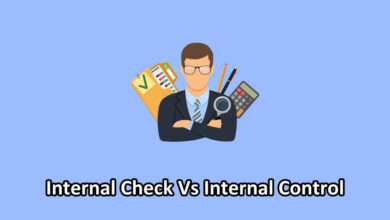Taxation is a common topic of discussion for many people, and it’s important to understand the terms used in the tax calculation process. Previous year and assessment year are two common terms that have different functions within the tax system. In this article, we’ll have a look into the complete concepts, examples, and a table showing the complete difference between previous and assessment year.
Previous Year and Assessment Year
| Previous Year | Assessment Year |
|---|---|
| The previous year refers to the financial year that precedes the current financial year and serves as a reference point for tax calculation. | Assessment year refers to the financial year in which the tax liability of an individual or an entity is determined. |
| The previous year may be less or equal to 12 months. | It is often equal to 12 months. |
| The previous year is considered as the year to which the income of a person or a business belongs. | The assessment year is the year in which the income tax liability for the previous year is determined. |
| The previous year is important to collect data. | The assessment year is important for analyzing data and calculating income tax. |
You Can Also Read:
What is the Previous Year (P.Y)?
The previous year refers to a financial year that immediately precedes the current financial year. In simple words, we can say the year in which the income earned by a person or an entity become taxable under the Tax Law is called the previous year. This year, individuals or entities pay tax as a percentage of all sources of income. The previous year or financial year starts generally starts on 1st April and ends on 31st March of the next year. It is mostly 12 months and can never exceed these 12 months.
Example
Let’s say the current date is April 1, 2023. The current financial year would be 2023-2024. The previous financial year would be the financial year that just ended, which would be 2022-2023. In other words, the previous financial year refers to the financial year immediately preceding the current financial year.
This concept of “previous year” is often used in the context of taxation, as well as in other areas where a record of financial transactions is kept on a yearly basis. For example, when preparing a tax return for the financial year 2023-2024, the taxpayer would need to report their income for the previous financial year, which was 2022-2023.
What is Assessment Year (A.Y)?
Assessment year, on the other hand simply refers to the year in which the income of a person or an entity is assessed for tax purposes. In other words, The “assessment year” refers to the financial year immediately following the previous year, in which the taxpayer’s income for the previous year is assessed for tax purposes.
For example, if the current financial year is 2022-2023, then the assessment year would be 2023-2024. The income earned during the previous year (2021-2022) would be assessed in the assessment year (2023-2024) to determine the taxpayer’s tax liability.
Previous Vs Assessment Year (Comparison Table)

Conclusion
So to wrap up this article, we can say that the previous year and the assessment year are two important terms in the taxation process. Understanding the differences between the two is crucial for individuals as it helps in determining their tax liability accurately. The previous year serves as a reference point for tax calculation while the assessment year is the year in which the tax liability is determined. The timing of tax calculation, the basis of tax calculation, and determining tax refunds are the key differences between the previous year and the assessment year.
Reference Blog:



